Himekawa-bashi Bridge in winter
The Himekawa-bashi Bridge is one of the RC Lohse bridges designed by Takeshi Nakajima, which was selected as a Civil Engineering Heritage Site in 2002.
There are five bridges designed by Nakajima in Nagano Prefecture, four of which I was able to visit last year. However, I could not cross the Himekawa-bashi Bridge because it was under maintenance work at the time.
I was told that the work would be finished in December, so the bridge should be passable now. As I went to Otari Village the other day to see the exhibition, I decided to check the Himekawa-bashi as well.
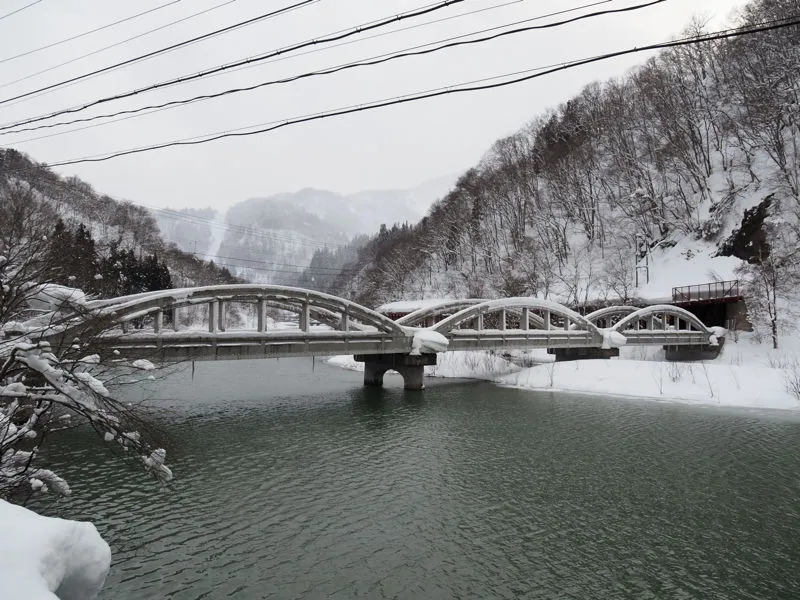
The photo was taken from downstream. The Himekawa No. 3 Dam is just downstream of the Himekawa-bashi, so this water surface is a dam lake.
Himekawa-bashi Bridge was built in 1937.
The bridge designer, Takeshi Nakajima (1906-1980), worked as a road engineer in Ibaraki and Gifu prefectures before being transferred to Nagano in 1933. He designed and built seven reinforced concrete Lohse bridges before moving to Niigata in 1937. These reinforced concrete bridges were designed to cope with steel shortages.
The Himekawa-bashi is one of them.
At the time of its completion, the right bank (the side where I am now) was Nakatsuchi Village and the left bank was Minami-otari village. (In 1958, the villages of Kita-otari, Minami-otari and Nakatsuchi were merged to form Otari Village.)
The road on which the bridge was built was the Matsumoto-Itoigawa Prefectural Road when it was completed. And it became a bridge on National Road 148 under the Road Act of 1952, but was later transferred to the prefectural road after the bypass was built.
Crossing the bridge on foot.
As I had imagined, the bridge is covered with snow. The explanatory board in front of the bridge is also covered in snow and cannot be read. However, the Civil Engineering Heritage plaque was visible.
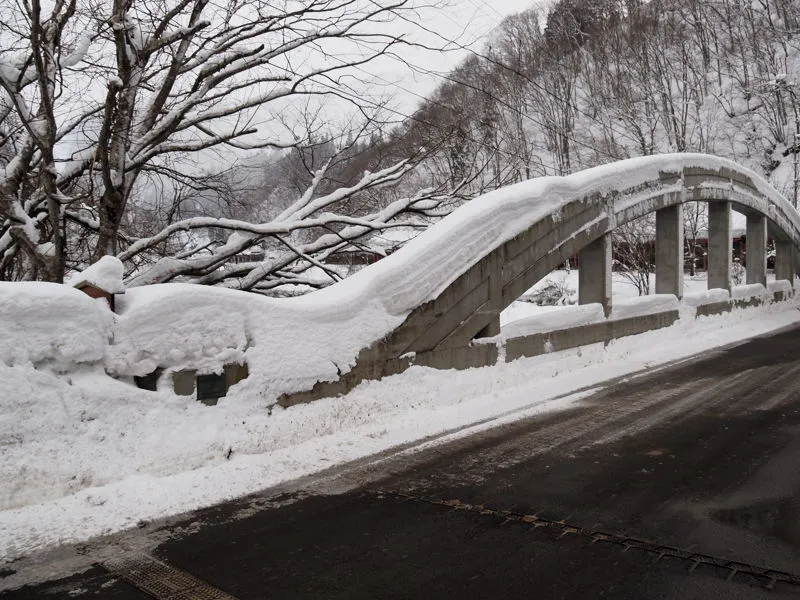
Just as I was about to cross, a bus was passing.
The bus was a Otari Village bus and the destination was indicated as Minami-otari Station.
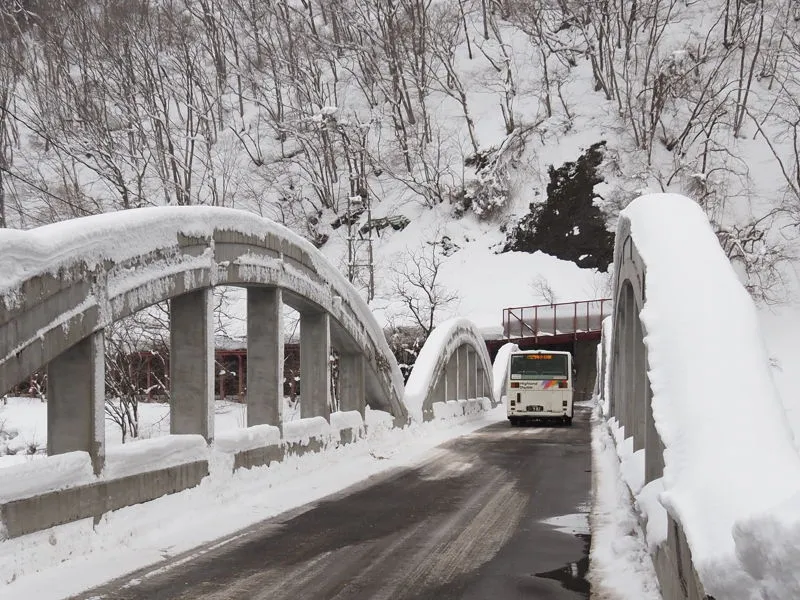
Looking upstream from the bridge.
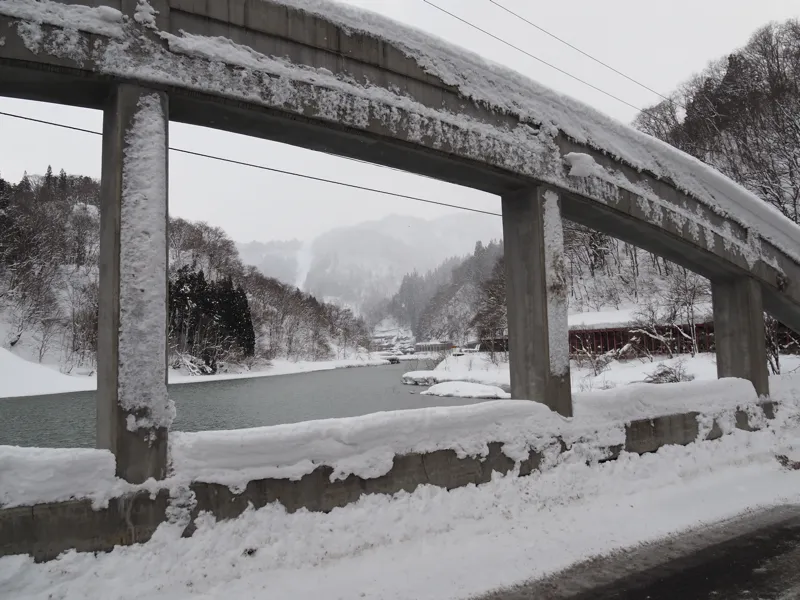
On the other side of the bridge, there is a snowshed. It is called ‘Kawajiri Domon’.
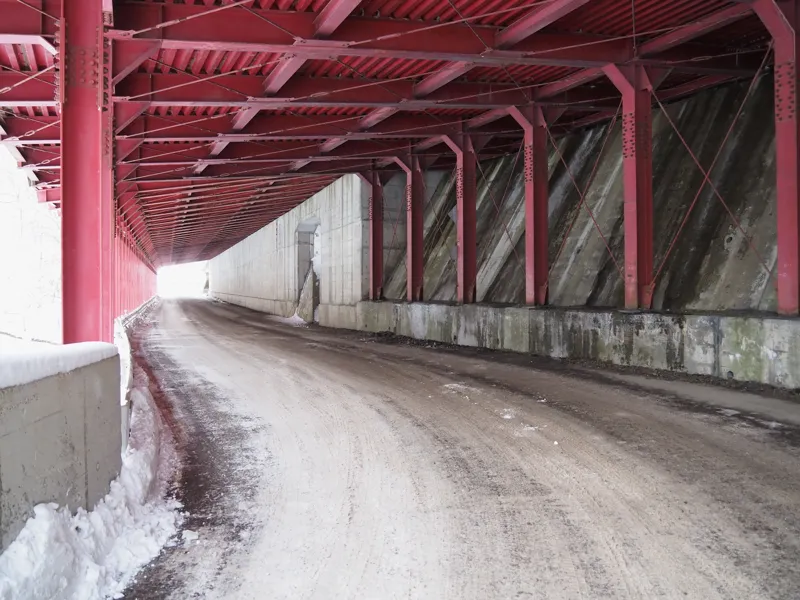
After leaving the snowshed, the Himekawa-bashi Bridge can be seen from the upstream side. The snow scenery is good, but it is cold, so I decide to turn back here.
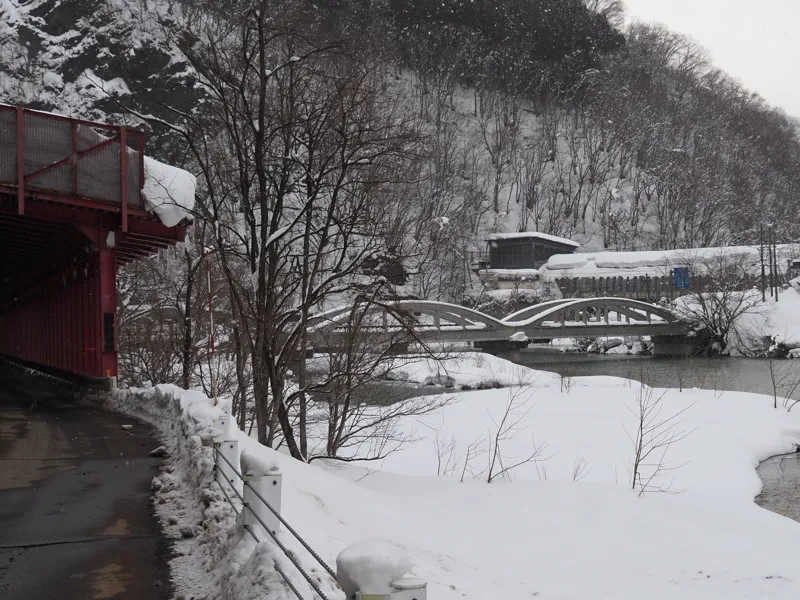
Traffic sign in the snowshed. The sign behind it reads ‘Please slow down on Himekawa Bridge, large vehicles must pass one at a time, Omachi Construction Office’.

After leaving the snowshed, a right turn leads to a bridge.
The bridge is 92.3 m long and 5.5 m wide.
The part of the bridge that is hidden by snow and not visible will be seen again next time.
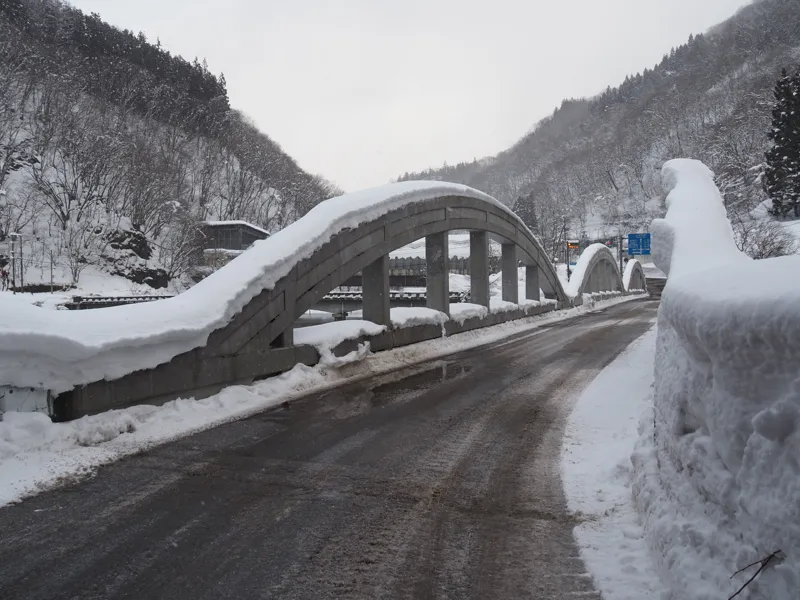
Get in the car and continue along the road where the bus drove.
There is a bus stop in front of Nakatsuchi Station, but the bus stop was also buried under snow.
Thankfully the roads are well cleared of snow.
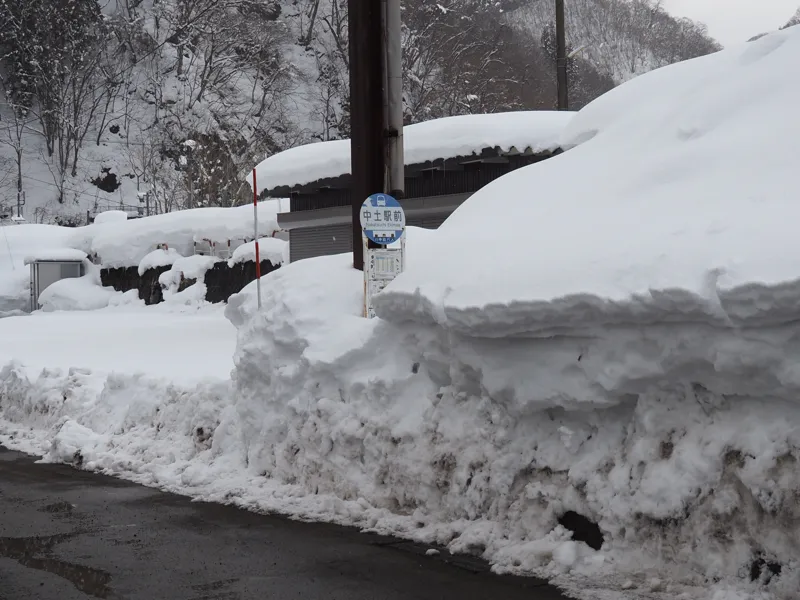
Nakatsuchi Station is also covered with snow, but we can enter the station building without any problems. This station is under the jurisdiction of JR West. (On the Oito Line, JR West has jurisdiction from Minami-otari Station to Itoigawa and JR East from Minami-otari Station to Matsumoto Station.)
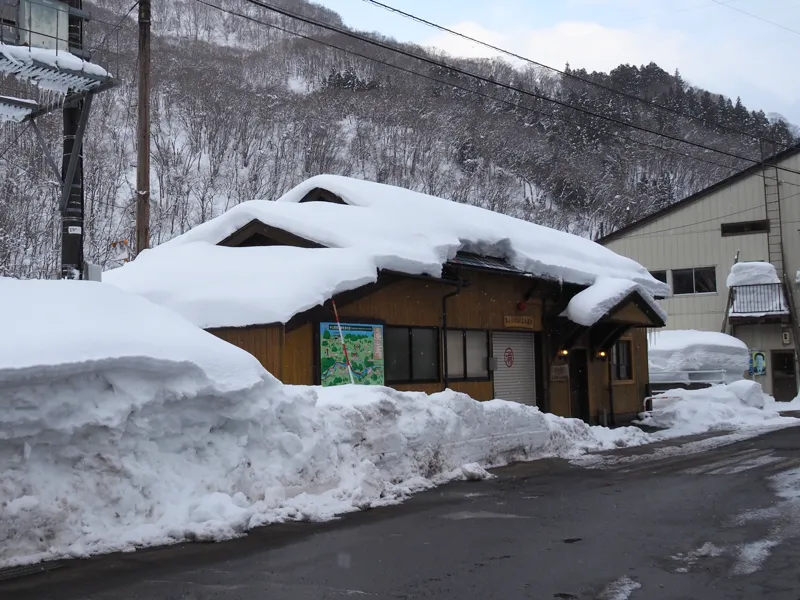
I didn’t check inside the station building last time, so went inside this time.
In this photo, the glass window on the right side looks perfectly white, but in addition to colored glass, patterned glass was fitted.
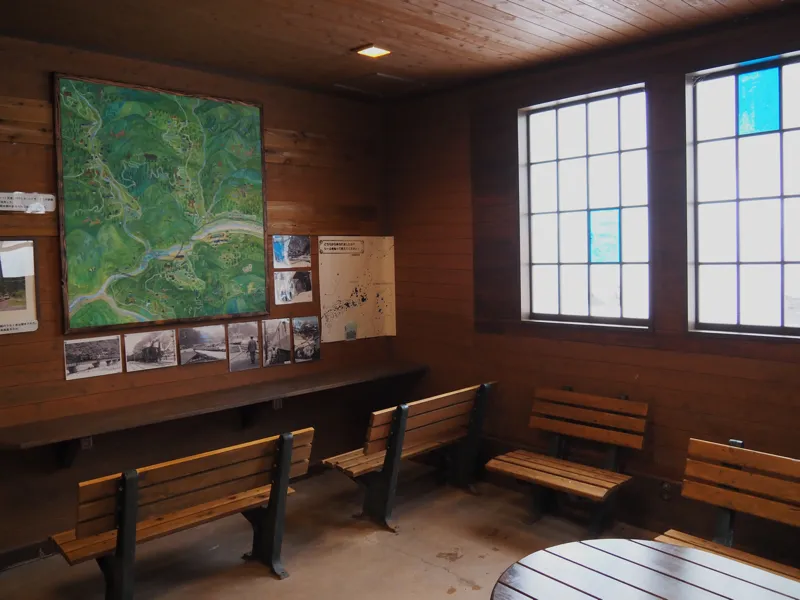
The next photo shows it better.
The glass was fitted with different patterns.
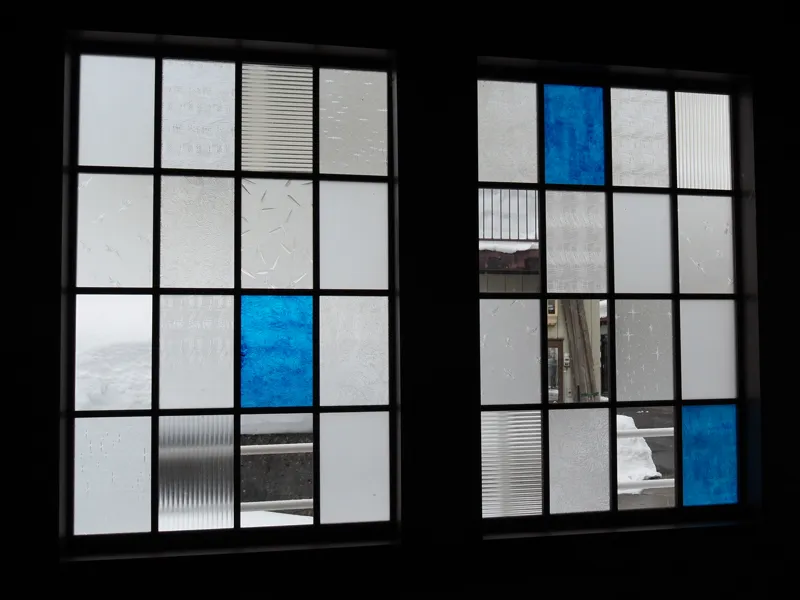
[Related articles]
“Otebashi Bridge (Kisogawa River)" (2024-11-09)
“Sakae-hashi Bridge" (2024-10-12)
“Oyazawa-bashi Bridge" (2024-10-03)
“Showa-bashi Bridge (2)" (2024-09-30)
“Showa-bashi Bridge (1)" (2024-09-29)
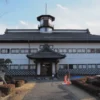
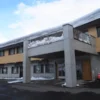
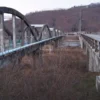
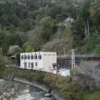
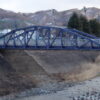
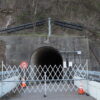
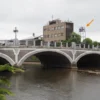
Discussion
New Comments
No comments yet. Be the first one!